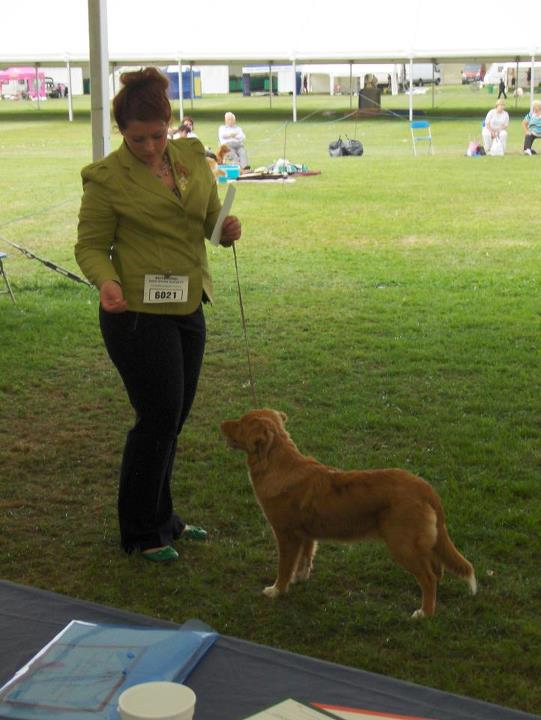Junior Handlers at Richmond – Jess Andrews
Jess Andrews is 15 years old and has two Nova Scotia Duck Tolling Retrievers called Toffee (Fallowfen Foxy Vixen) and Mollie (Fallowfen Faithful Yoko).
At Richmond 2012 Jess handled Toffee and was shortlisted in the JHA 12-16 Gundog which was judges by Jenifer Fairhall. Toffee was unfortunately withdrawn from the breed classes this year after going lame after the handling but it was Mollie’s first show. Mollie was 3rd in the Toller Junior Bitch and 1st AV Rare Breed Puppy Bitch and Best AV Rare Breed Puppy.
Jessica started handling only four years ago with Toffee after attending a local companion show and finding out about Ringcraft classes.
What Jess loves about handling is working with her dogs to show them off to their full potential, and to have fun whilst doing so.
Jess trains at Stevenage Ringcraft and attended the Winning Paws training day. She says “I would like to thank Ray, Debbie and Roxanne McDonald for all their support and guidance over the years”.
A huge well done to Jess for the handling and for qualifying her Toller puppy for Crufts 2013 at her first show. I know that is what you wanted. Good luck for Crufts with Mollie and in the handling.
